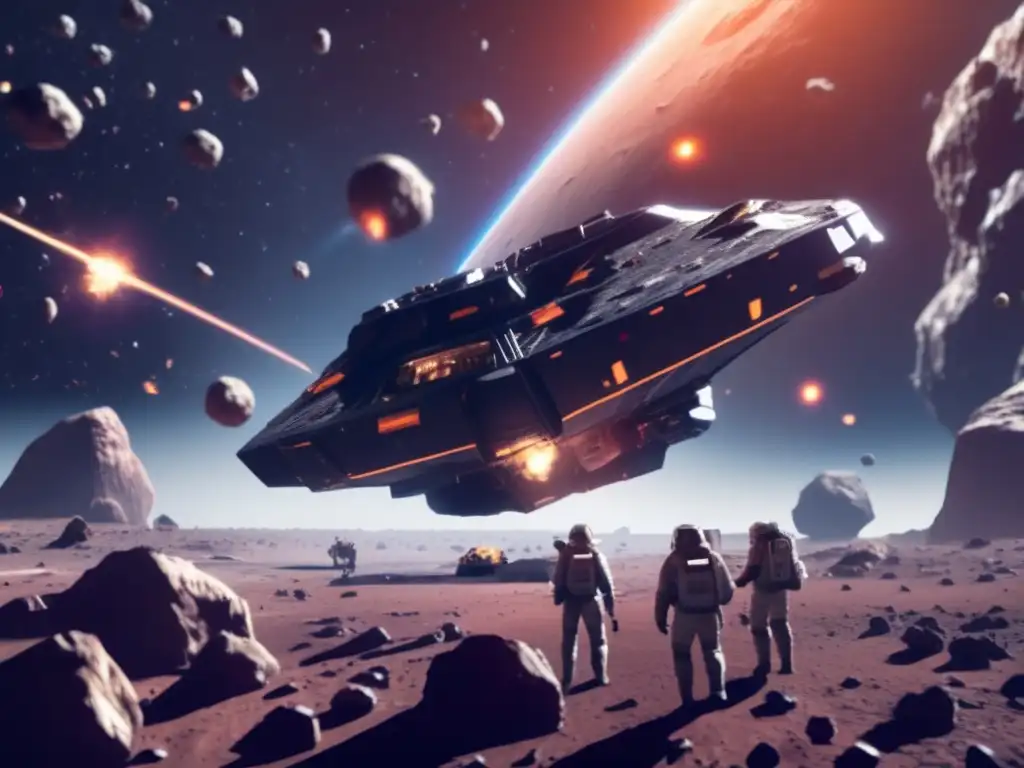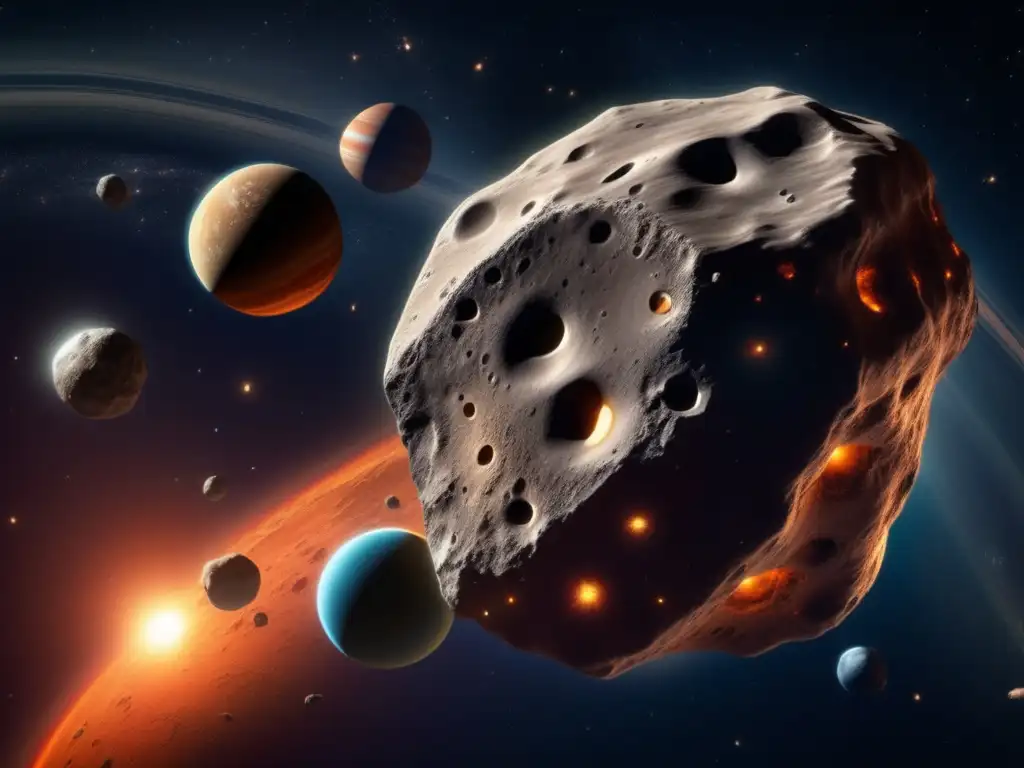Defenders Of The Solar System: Asteroid Defense Strategies

Introduction
Asteroids are among the most fascinating objects in our solar system. They have captured the imagination of scientists and writers alike, not only for their potential to reveal clues about the early history of our solar system but also for their potential to impact Earth and cause significant damage. The impact of an asteroid could release energy equivalent to millions of nuclear bombs and could potentially wipe out entire cities or even civilizations.
While the threat of an asteroid impact cannot be completely eliminated, various strategies and technologies have been proposed to mitigate the risk and defend against potential impacts. In this article, we will explore the various asteroid defense strategies being developed by experts around the world to protect our planet from these celestial threats.
Early Detection

The Importance of Early Detection
The key to any successful asteroid defense strategy is early detection. If we can detect an asteroid well in advance of its potential impact, we can take action to deflect it away from Earth or destroy it before it reaches us. Several telescopes and observatories around the world are dedicated to detecting and tracking potentially hazardous asteroids, including NASA's Near-Earth Object Program and the European Space Agency's Space Situational Awareness program.
The Role of Technology in Detection
Advancements in technology have made it possible to detect smaller and more distant asteroids. This includes ground-based telescopes, space-based observatories, and infrared sensors. Additionally, new algorithms and modeling techniques are being developed to better predict the trajectory of an asteroid and determine whether it poses a threat to Earth.
The Need for International Cooperation
Asteroid impacts are a global threat, and as such, international cooperation is essential to developing effective detection and mitigation strategies. Various countries and organizations are working together on asteroid detection and defense initiatives, including NASA, the European Space Agency, and the United Nations Office for Outer Space Affairs. The International Asteroid Warning Network was also established to facilitate communication and coordination between these various initiatives.
Mitigation Strategies

Deflection Techniques
The most promising mitigation strategy involves deflecting the asteroid away from Earth. This can be achieved through various techniques, including:
- Kinetic impact: A spacecraft is sent to collide with the asteroid at high speed, imparting a force that alters the asteroid's trajectory.
- Gravity tractor: A spacecraft hovers near the asteroid and uses its gravity to gradually pull the asteroid off course.
- Ion beam shepherd: A spacecraft emits a beam of ions that pushes the asteroid off course.
Destruction Techniques
If an asteroid is too large or too close to Earth to be deflected, destruction may be the only option. Several destruction techniques have been proposed, including:
- Nuclear explosion: A nuclear device is detonated near the asteroid, releasing energy that disrupts the asteroid's trajectory.
- Directed energy: A high-powered laser or other directed energy source is used to heat and vaporize the asteroid, causing it to break apart.
- Kinetic impactor: A spacecraft is sent to collide with the asteroid, shattering it into smaller, less threatening pieces.
Challenges and Limitations

Cost and Resources
Developing and implementing asteroid defense strategies requires significant resources and funding. While organizations like NASA have dedicated funding for this purpose, the cost of actually deflecting or destroying an asteroid could be billions of dollars.
Accuracy and Reliability of Detection
Even with advanced detection technology, there is still a risk of false alarms or missed detections. Additionally, accurately predicting the trajectory of an asteroid can be difficult, as even small perturbations in its orbit can significantly alter its path.
Public Perception and Acceptance
There may be public perception and acceptance issues associated with some asteroid defense strategies, particularly those that involve nuclear weapons or other destructive technologies. Careful consideration and communication with the public will be necessary to ensure support for these initiatives.
Frequently Asked Questions

-
How likely is an asteroid impact?
Asteroid impacts are rare but potentially catastrophic events. While the likelihood of an impact is low, the potential consequences are severe enough that asteroid defense strategies are necessary.
-
What is the biggest asteroid threat?
The biggest asteroid threat comes from near-Earth asteroids larger than 140 meters in diameter. These are large enough to cause significant damage but small enough that they are difficult to detect far in advance.
-
Can we completely eliminate the risk of an asteroid impact?
No, it is impossible to completely eliminate the risk of an asteroid impact. However, by detecting and tracking potentially hazardous asteroids and developing effective mitigation strategies, we can significantly reduce the risk of an impact.
-
How long would we have to prepare for an asteroid impact?
The amount of time we would have to prepare for an asteroid impact depends on how far in advance it is detected. Ideally, we would detect an asteroid several years or decades before it is projected to impact Earth, giving us sufficient time to develop and implement a mitigation strategy.
-
What can individuals do to help with asteroid defense efforts?
While individuals cannot directly participate in asteroid defense efforts, they can support organizations like NASA and other space agencies that are working on asteroid detection and mitigation. Additionally, educating oneself and others about the risks of asteroid impacts can raise awareness and encourage support for these initiatives.
Conclusion
Asteroid defense strategies are critical to ensuring the safety and security of our planet. While the threat of an asteroid impact cannot be completely eliminated, early detection and effective mitigation strategies can significantly reduce the risk of such an event. With continued investment in research and technology, we can continue to improve our ability to defend against potential asteroid impacts and protect our planet for generations to come.
If you have any thoughts or comments about this article, we invite you to share them in the comments section below. Thank you for reading and for your support of asteroid defense initiatives.
Additional Resources

For more information about asteroid defense strategies and related topics, we recommend the following resources:
 Protecting Our Planet: The Latest In Asteroid Defense
Protecting Our Planet: The Latest In Asteroid Defense Standing Up To Space Rocks: Strategies For Asteroid Defense
Standing Up To Space Rocks: Strategies For Asteroid Defense Our Planetary Guardians: Techniques In Asteroid Defense
Our Planetary Guardians: Techniques In Asteroid DefenseIf you want to discover more articles similar to Defenders Of The Solar System: Asteroid Defense Strategies, you can visit the Planetary Defense category.
Leave a Reply

Articulos relacionados: